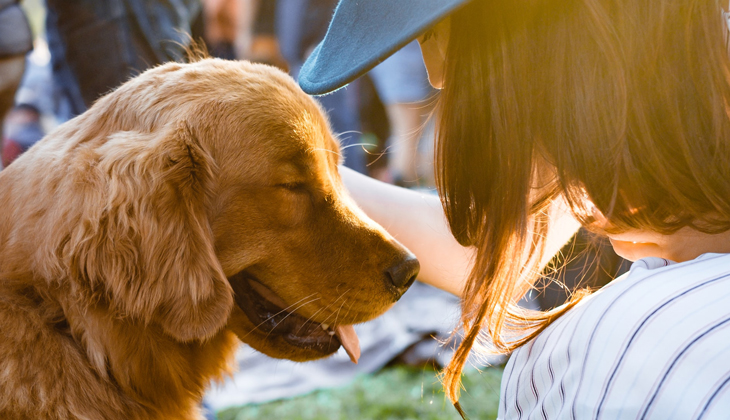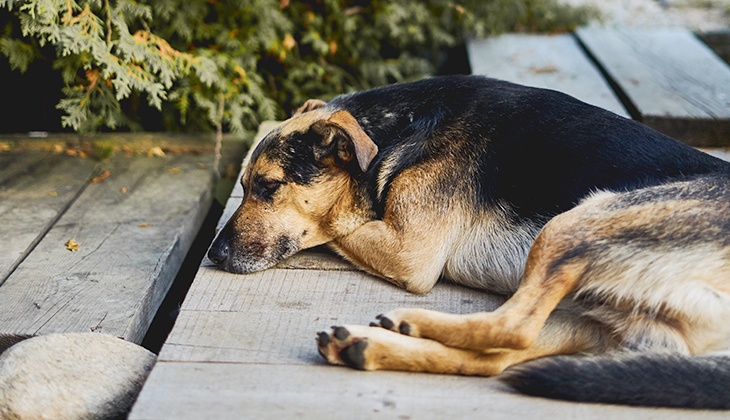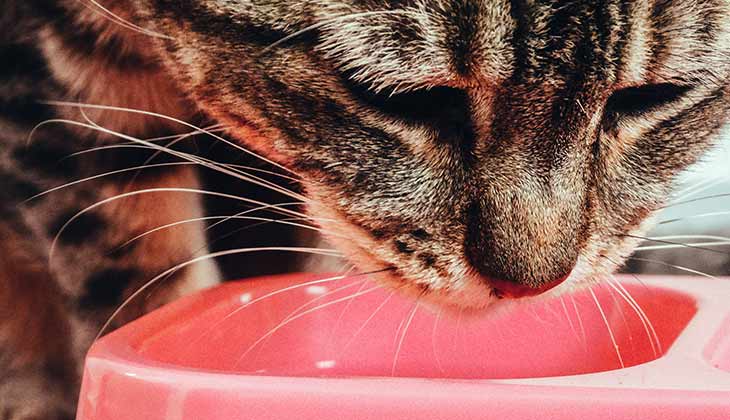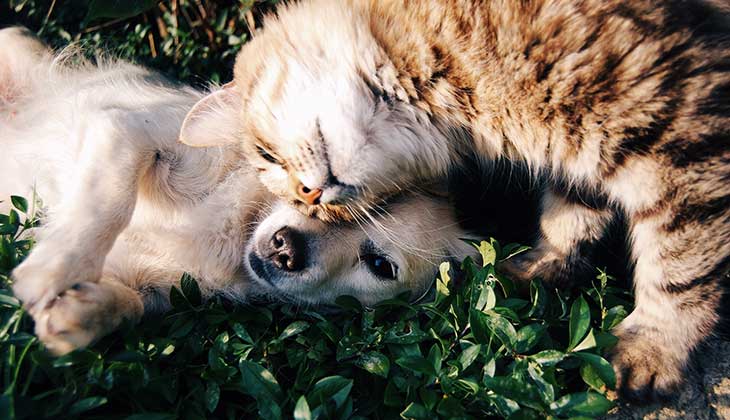Get The Facts:
Diabetes Signs and Symptoms in Dogs and Cats
HEALTH & PROTECTION
1 Dec, 2022
6 minutes

If there’s one thing that both dog and cat parents can agree on, aside from how awesome their furry friend is, it’s that being in tune with their dog’s or cat’s behavioral patterns is the key to understanding subtle changes in their dog’s or cat’s health and wellbeing. As humans, we usually can communicate when something is amiss, but our fur babies are not so lucky. Of all the things they depend on us for, deeply knowing and understanding their states of being is paramount. Subtle or apparent behavioral pattern changes may be an indication that something on the inside is changing as well. Pet diabetes is such a condition. The signs and symptoms are subtle until the situation escalates into something serious.

What Is Diabetes?
Good question.
Like humans, the cells in a dog’s or cat’s body need glucose for energy, but glucose cannot be absorbed into cells without insulin, a hormone produced by special cells in the pancreas. Every time a dog or cat eats, food is digested, and insulin is produced. When food is digested, nutrients like glucose, enter the bloodstream. Insulin enters the bloodstream, too. Once in the bloodstream, insulin attaches to cells and signals when the time is right to absorb glucose, allowing glucose molecules to leave the bloodstream and enter the cell’s interior. In effect, insulin is like a secret password that opens the cell’s door to allow glucose to enter. Cells cannot absorb glucose without insulin. As a result, glucose continues to accumulate in the bloodstream, a condition referred to as hyperglycemia, and cells are deprived of the energy they need. This is how the very subtle signs of diabetes begin to show.

Signs of Diabetes in Dogs And Cats
Eventually, there is so much glucose in the bloodstream it overflows into the kidneys and is released in the urine. When this happens, large amounts of water is released as well. Increased urination is one of the first signs of diabetes in dogs and cats. Dogs and cats will naturally drink more water to prevent dehydration experienced from so much water loss. Increased thirst is also a sign of diabetes.
You can imagine that both of those signs might be hard to detect. It may take several days or weeks to notice that a dog or cat is drinking or urinating more than usual, especially when you consider things like activity levels or weather patterns. Certainly, most dogs tend to drink more when they’re outside playing in the summer; and how long does it take to notice a cat that is frequenting the litter box more often than usual?

Another subtle sign is weight loss with or without increased appetite. This happens because when the cells are deprived of glucose, they will seek other energy sources. The body starts breaking down stores of fat and protein for energy, causing weight loss. Appetite can, but does not always increase, but the increase is usually not sufficient to compensate for the energy loss.
There are three more signs that may surface: depression, lethargy, and vomiting. If all the signs were not so subtle, diabetes would be easy to detect, but sometimes it’s difficult to piece this puzzle together.

Risk Factors Of Diabetes In Dogs And Cats
Some dogs and cats are more at risk of developing diabetes than others. Age is a factor for both dogs and cats. Middle-aged and older dogs and cats tend to develop diabetes more often than their younger counterparts, although it is possible for a younger dog or cat to develop diabetes.
Genetics, breed, and obesity, especially in cats, may also play a role for dogs and cats. Purebred dogs such as Australian Terriers, Beagles, Bichon Frises, Cairn Terriers, Dachshunds, Fox Terriers, Keeshonds, Miniature Schnauzers, Pugs, and Samoyeds tend to be more at risk. When it comes to diabetes in cats, Burmese cats are at higher risk than other breeds.
Finally, unspayed female dogs and neutered male cats are at risk.
Regardless of whether or not your dog or cat checks the box of any or all risk factors, you need to schedule a visit to your vet the minute you notice just one of the signs mentioned earlier. Increased urination, thirst, or appetite is always a cause for concern and a reason to visit the veterinarian without delay.

If your veterinarian suspects that your dog or cat has diabetes, he or she will administer a urine test. If the urine test is positive, blood tests will be performed to confirm hyperglycemia, as well as other lab tests to check on the health and wellbeing of your furry friend. Although you might be tempted to panic, don’t.
Diabetes is manageable. Insulin injections, consistently appropriate meals delivered at the same time each day, regular exercise, and monitoring and recording water and food consumption, urine production, weight, and glucose levels is the key to helping your dog or cat maintain a healthy lifestyle day after day. Taking one day at a time is critical in the ongoing treatment of diabetes. That’s because the safest way to help your dog or cat feel better is to maintain the routine your veterinarian puts in place.
RECOMMENDED
POPULAR PAGES
RELATED POSTS
-

Finding out your dog or cat has diabetes can be a lot to digest, learn all the terms so you can ask the right questions and stay on top of your pet’s needs.
-

Pets do not understand the holidays period which change their routines. Here are 6 tips to create a pet friendly home during Chrismas!
-

It is important to know about rabies and how to protect our families. Protect your pet from rabies with an up-to-date vaccination from your veterinarian.
-

Your beloved cats can also suffer from cold and flu. In this article learn how to protect your cat during cold periods.






